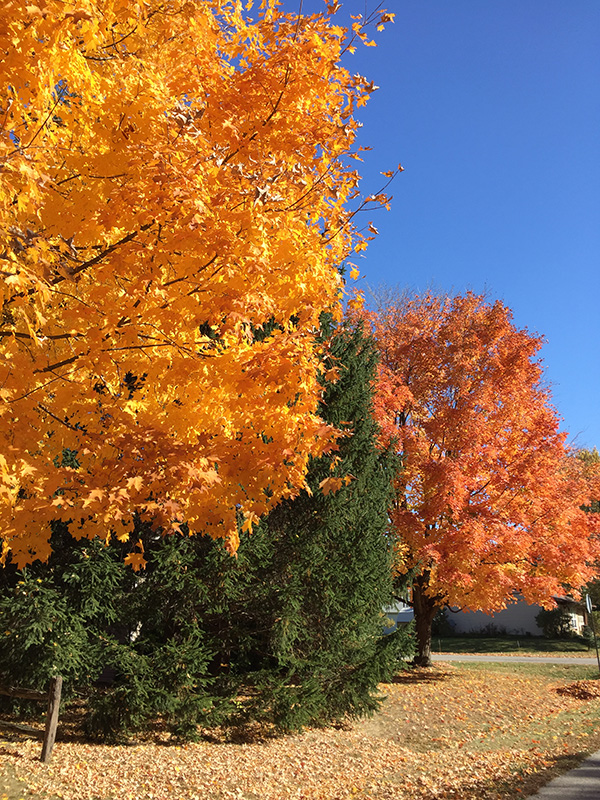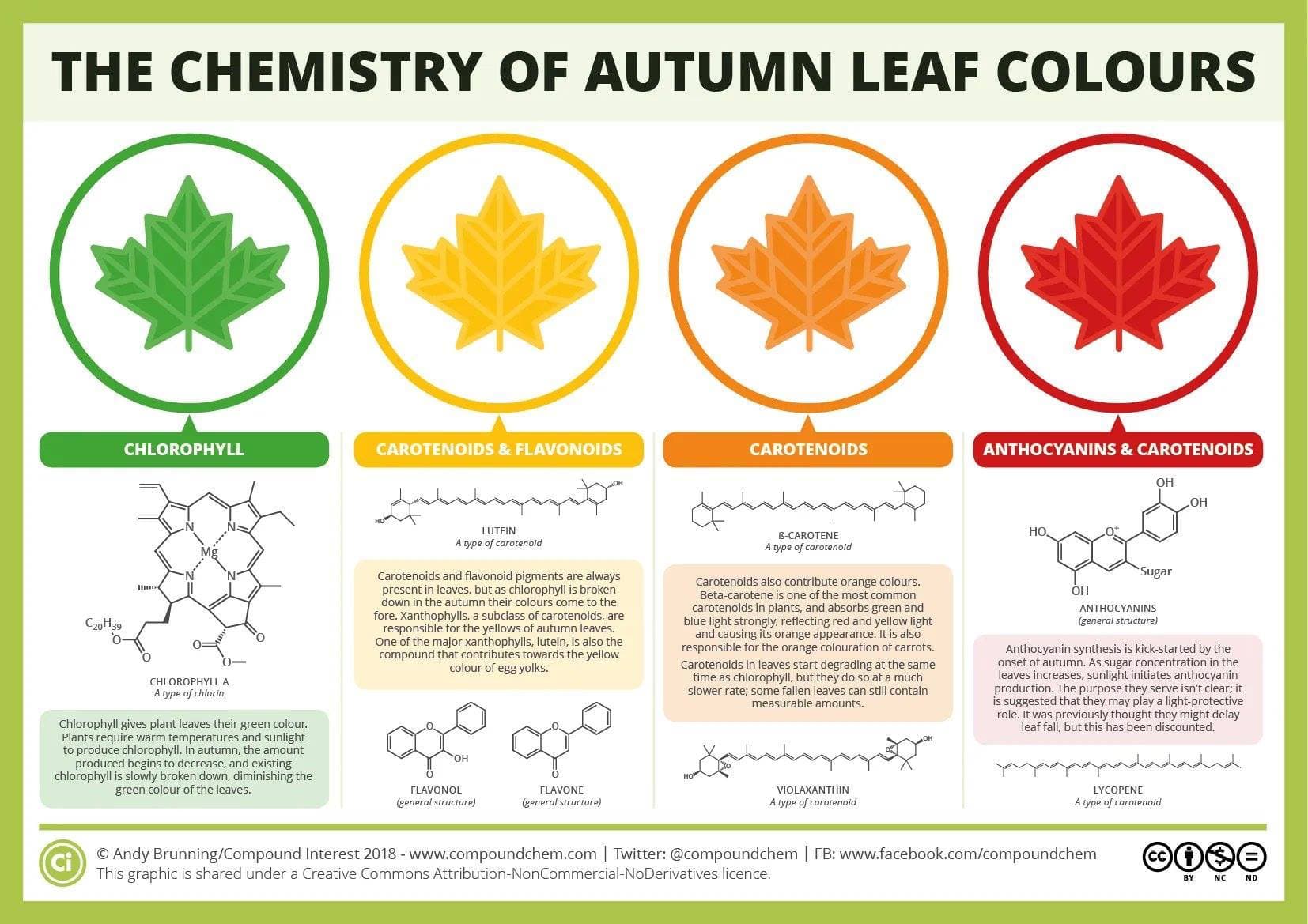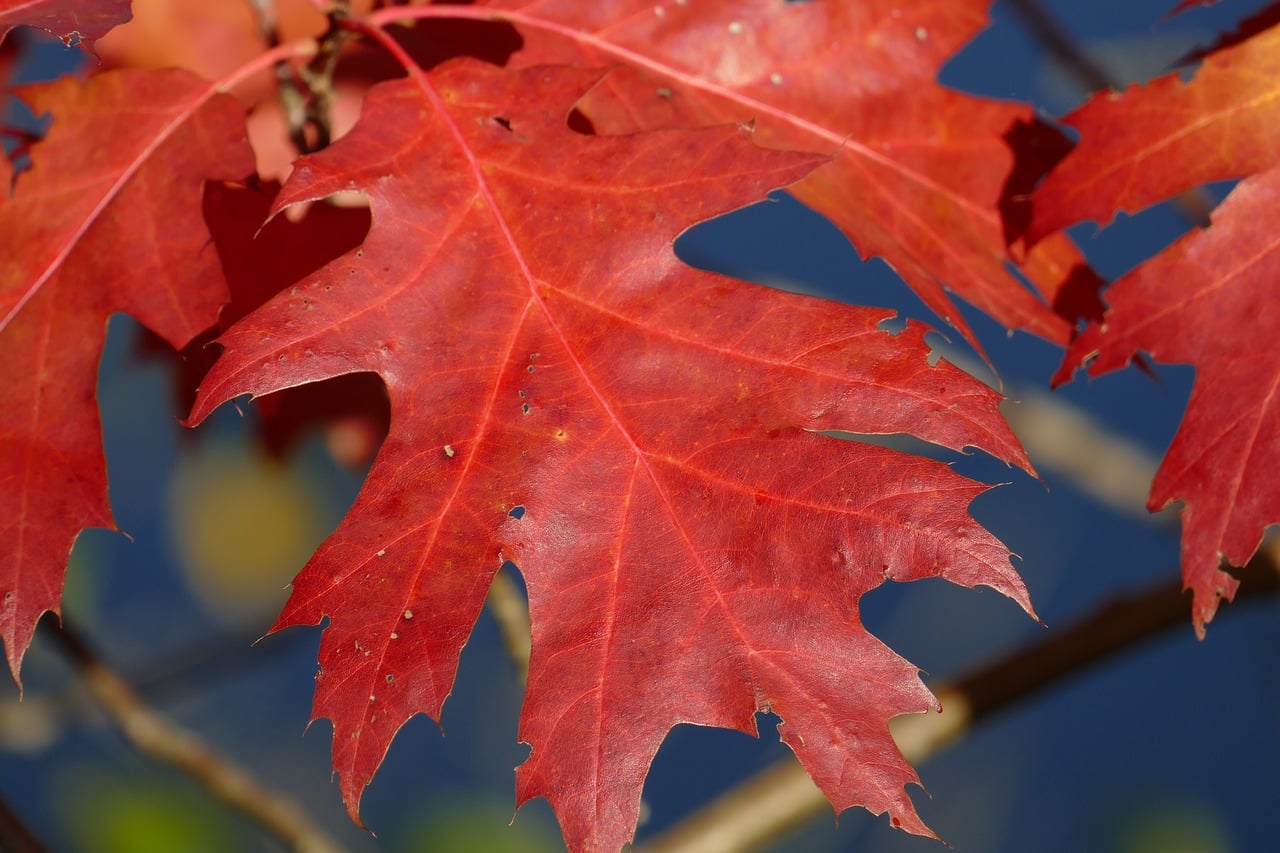what temp do leaves change color
Actually fall leaf color is not only affected by temperature but by fewer hours of sunlight. As days grow shorter and nights grow longer and cooler biochemical processes in the leaf begin to paint the landscape with.

19 Of The Best Trees And Shrubs To Add Fall Color To Your Yard Trees And Shrubs Autumn Garden Shrubs
In some areas of the world the weather changes in the fall making the air turn cold.

. But as with most phenomena in the world there is a thorough scientific explanation of this magic and consequently as to why leaves change color in the fall. As the Earth makes its 365-day journey around the sun some parts of the planet will get fewer hours of sunlight at certain times of the year. But why do the leaves change color.
Without as much sun the leaves are no longer needed to help the tree manufacture food so. Leaves will then fall one week after that so anywhere from late October to mid-November. Evergreen trees with needles which stay green to continue the photosynthesis process through the winter are coniferous Deciduous trees usually have large broad leaves.
Leaves change color in the fall because less daylight and cooler temperatures prompt them to stop producing chlorophyl the pigment in the leaves that give them their green color explained Colleen Matula a forest ecologist at the Wisconsin Department of Natural Resources. Denver leaves change the earliest in late September. Adequate summer rains promote good tree health leaf retention and therefore color production during the autumn.
Weather is responsible for the onset of fall and the intensity of autumn color. The right weather during the autumn can promote more intense color production. The leaves of trees change color in the fall because of changes in temperature and daylight.
While the leaves in their autumn hues are beautiful the reason behind their transformation is anything but. When the chlorophyl breaks down the yellows oranges and reds become visible. How do leaves change color.
The chlorophyll breaks down and leaf color starts to change. The more favorable warm sunny daycool night temperature cycles that occur in early autumn the more likely that fall season is to experience vibrant colors with lots of reds. Some years those bright and beautiful reds purples and yellows last for weeks while other years autumn leaves quickly turn brown.
Leaf Fall Dates in the West. Nature is so fascinating. Weather Affects Color Intensity.
Low temperatures above freezing will favor anthocyanin formation producing bright reds in maples. We are in essence watching the leaves starve themselves and die. As the days grow shorter and the temperatures cool chlorophyll degrades and goes from green to colorless allowing the oranges and the yellows to show up.
The temperature slowly drops. Trees that have leaves that change color in fall are deciduous. Photosynthesis or the production of sugars that depend on sunlight begins to slow down in response to the change in the amount of light.
Rainy and windy weather during. Trees respond to the decreasing amount of sunlight by producing less and less chlorophyll. The extent of red color and length of time leaf color is.
Temperature light and water supply have an influence on the degree and the duration of fall color. The reds anthocyanins which require sunlight for production are enhanced by cold and sunny days. Changes in these weather conditions can play a role in how early the leaves change and how long they keep their beautiful colors.
All leaves gradually lose chlorophyll during the growing season and this loss accelerates before leaf fall. When leaves appear green it is because they contain an abundance of chlorophyll. The result is a reduction of color during the peak of the season.
Why Do Trees Change Color. As we all learned in 5th grade science Chlorophyll is the key component in a plants ability to turn sunlight into glucose which in turn feeds the trees. An early frost will weaken the red color.
Why do leaves change color in the fall. The main reason for the eye-popping color change is not autumns chilly weather but sunlightor rather the lack of daylightDay and night are roughly equal in length on the autumnal equinox in late September but afterward nights are growing longer and days shorter. Under optimal conditions this process of chlorophyll loss is very orderly and allows the plants to resorb much of the nitrogen in the structure of the pigment.
Autumn comes and then winter. There is so much chlorophyll in an active leaf that the green masks other pigment colors. The needle- or scale-like leaves remain green or greenish the year round and individual leaves may stay on for two to four or more years.
Apply these rules to a map of North America and it is possible to zigzag north to sou. Gusty winds and hard rains can cause leaves to fall before their full-color potential is reached. Leaves in the West will change in early or mid-October.
As the days grow shorter and cooler trees begin to draw cells inward to preserve their energy. Leaves typically produce their vivid hues of green from spring through summer into early fall through the constant creation of Chlorophyll. Warmer temperatures may actually make leaves darker in color so that they reflect less light.
The conditions that make for spectacular autumn color displays are a moist growing season followed by a dry autumn with warm sunny days and cool but not freezing nights. When chlorophyll is reduced other pigments in the leaves begin to show or are produced. This study focused on tropical forests but the results likely apply to.
In Washington Oregon and Northern California youll see peak leaf color in late October. At the same time other chemical reactions happensome plants develop red anthocyanin pigments as in dogwood trees sumac. The color-changing process is simply magical.
Why do leaves change color in the fall. Extreme weather changes can also have an effect on the leaves. The timing of color changes and the onset of falling leaves is primarily regulated by the calendar as nights become longer.
Watch the video to find out. Most of the year these leaves are green because of the chlorophyll they use to absorb energy from sunlight during photosynthesis. None of the other environmental influences such as temperature rainfall food supply are as unvarying as the steadily increasing length of night during autumn.
These startling results illuminate the future of leaves in our changing climate. As the autumn days shrink the reduced. Now that its fall the leaves are changing from green to red yellow and red.
Light regulates chlorophyll production so as autumn days grow shorter less chlorophyll is produced. Leaves are entering into a dangerous feedback cycle where warm temperatures force plants to build less reflective leaves that then trap heat and warm the world even more. Weather is also an important part of the color change.
And cause the leaves to drop before they change color. The leaves convert the. This leads to a reduction of chlorophyll the pigment that supports photosynthesis and gives leaves their green color.
In the fall the temperatures get colder and there is also more rain and snow. These colors are present in the leaf during its growing season. Leaves change color during the autumn because the amounts of pigments change as the leaves prepare to fall from the trees.
In the winter it would take a lot of energy and water for. In addition strong winds will affect a quicker leaf drop. Combine a warm wet spring with a mild summer and bright autumn days with cool nights for.
Why does this happencaption captionDeciduous trees drop their leaves in winter. Image by Paul Buckingham alignrightcaptionFirst lets think about why some trees drop their leaves before winter. During this time many leaves also change colors.
However early frost will weaken the brilliant. In those regions the days become shorter and the nights get longer.

Why Do Leaves Change Colors In The Fall Britannica

Wistful For Autumn Splendor Autumn Leaves Fall Wallpaper Fall

Why Do Leaves Change Color And Why Do Leaves Fall Off In Autumn Purdue Extension Forestry Natural Resources

How Weather Affects Fall Colors Msu Extension

Why Leaves Change Color In The Fall Chemistry

Climate Change Is Making Fall Leaves Change Color Sooner Ecowatch

Today I Found Out Why Leaves Change Color In The Fall The Primary Thing That Triggers The Changing Of Colors In Autumn Leaf Color Colorful Leaves Fall Colors

Chemistry Of Why Leaves Change Color In The Fall Color Change Biology Plants Potted Mums

Leaf Thermometer Paper Temperature Reader Paper Quilling For Beginners Paper Leaves Cool Bookmarks

L E A V E S Change Color Because Of Changes In The Length Of Daylight And Changes In Temperature The Leaves Stop Their Food Making Process The Chlorophyll Bre

Complete Unit For Why Do Leaves Change Colors By Betsy Maestro Color Lessons Earth Science Homeschool Color Change

Why Leaves Change Color Untamed Science

Why Do Leaves Change Color In The Fall Moon Science Homeschool Nature Study Science Activities For Kids

Why Do Leaves Change Color Here S The Scientific Explanaition

Brain Post Why Do Leaves Change Color In The Fall Snowbrains

Fall Leaves Circle Autumn Leaf Color Leaf Coloring Autumn Leaves

The Meaning Of Fall Foliage Why Leaves Change Color New England Today


0 Response to "what temp do leaves change color"
Post a Comment